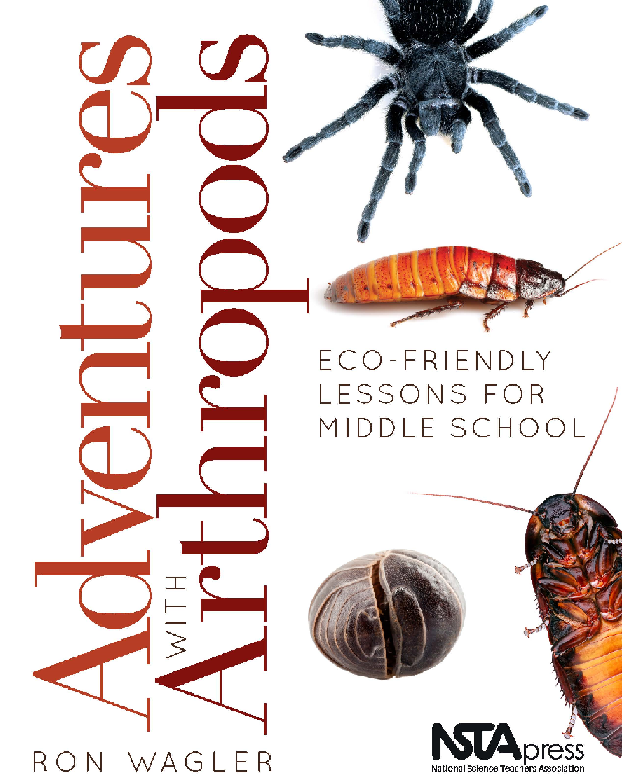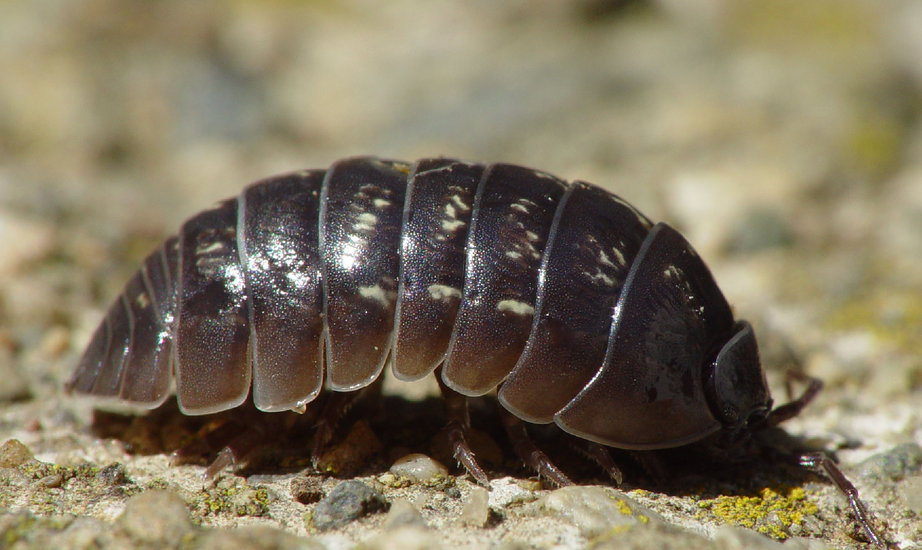Elementary Informal Education | Daily Do
How Do We Know What Isopods Do?

Disciplinary Core Ideas Is Lesson Plan Life Science NGSS Science and Engineering Practices Elementary Informal Education Grade 4
Sensemaking Checklist




Welcome to NSTA's Daily Do
Teachers and families across the country are facing a new reality of providing opportunities for students to do science through distance and home learning. The Daily Do is one of the ways NSTA is supporting teachers and families with this endeavor. Each weekday, NSTA will share a sensemaking task teachers and families can use to engage their students in authentic, relevant science learning. We encourage families to make time for family science learning (science is a social process!) and are dedicated to helping students and their families find balance between learning science and the day-to-day responsibilities they have to stay healthy and safe.
Interested in learning about other ways NSTA is supporting teachers and families? Visit the NSTA homepage.
What Is Sensemaking?
Sensemaking is actively trying to figure out how the world works (science) or how to design solutions to problems (engineering). Students do science and engineering through the science and engineering practices. Engaging in these practices necessitates that students be part of a learning community to be able to share ideas, evaluate competing ideas, give and receive critique, and reach consensus. Whether this community of learners is made up of classmates or family members, students and adults build and refine science and engineering knowledge together.
Introduction
Did you ever wonder about the roly-polies (also known as sow bugs and pill bugs) that you find outside when you turn over a rock or rake damp leaves? Maybe you've even seen a few in your garage or house. It turns out these roly-polies are terrestrial isopods, which are related to shrimp and lobsters! Although maybe you're not too surprised, based on their appearance.
In today's task, How Do We Know What Isopods Do?, students and their families engage in science and engineering practices to begin to make sense of the science idea that animals have external structures that serve various functions in growth, survival, and behavior—while becoming more familiar (and hopefully less fearful) of terrestrial isopods.

Today's task is based on activities by Dr. Ron Wagler, published in the NSTA Blog post What Are These Bugs Under the Log? Home-Based Science With Terrestrial Isopods.

Preparing for the Task
Terrestrial isopods have many common names, such as roly-poly, sow bug, and pill bug. They are small land-dwelling crustaceans that are related to shrimp and lobsters. The best time to collect terrestrial isopods (isopods) is between spring and fall.
Materials (per student or student pairs)
- small container with well-fitting lid
- cotton ball, paper towel (1/2 sheet), or small piece of sponge
- *hand lens or magnifying glass (optional)
- ruler (optional)
- large container (6 inches or longer)
- objects to place in large container (small rock, coin, twig, leaves, folded bits of paper, etc.)
- variety of food scraps (potato, apple, orange, lettuce, carrot, bread, cereal, etc.)
*Students might also use a cell phone or tablet camera to magnify the isopods.
Before heading outside, students need to prepare the container for the isopods:
- Poke 3–5 holes in the lid of the container.
- Dip the cotton ball in water to get it wet, then squeeze out the excess water. (The cotton ball should be damp; if the cotton ball is dripping water, it's too wet.)
- Place the cotton ball in the container, and put on the lid.
Share with students where to look for isopods—under rocks, dead logs, dead vegetation, and other objects that keep the soil and air underneath damp (lift the objects to expose the isopods). Describe to students how to pick up the isopods without harming them:
- Gently touch the end of the isopod with your finger and allow it to walk onto your other hand, or
- Put your thumb and index finger on either side of the isopod and gently pick it up (be careful not to squeeze the isopod).
Students should place their isopods in their prepared containers. Each student should try to collect 10 isopods, but it's okay if they find fewer.
Remind students and their families to wash their hands with soap and water after handling the isopods.
Now you're ready to begin today's task!
Part 1: What Do Isopods Look Like?
Students may be familiar with isopods, but may never have carefully observed them. In this first part of the task, students observe and describe an isopod and wonder about behaviors an isopod uses to survive.
Instruct students to gently transfer one isopod into the large (empty) container. Ask students to describe the isopod using words and pictures. Encourage them to use a hand lens, magnifying lens, or reading glasses to observe the isopod more closely. If students have a cell phone or tablet with a camera, they can take and enlarge a picture to reveal more details of the isopod's structure.
If you notice students' descriptions are mostly qualitative (small, lots of legs, brown), ask, "How could you quantify your descriptions?" (measure the length with a ruler, count number of antennae/legs/segments)
If students are reluctant to draw, tell them not to worry about making the drawing look exactly like the isopod. Ask them to focus on the capturing the details; if the isopod has seven segments, make sure to draw seven even if your segments don't look exactly like the segments on the isopod.
Tell students to return the isopod to the main container and put on the lid. Remind students to wash their hands with soap and water.
Ask students to predict how the isopod uses its external parts to survive and to include why they say so.
Allow the isopods to recover in their container for at least 10 minutes before moving to Part 2.
Part 2: What Do Isopods Do?
Tell students they are going to observe the behavior of isopods.
- First, ask students to fill the large container with objects that have a variety of textures (such as rocks, sticks, leaves, small pieces of folded paper, craft sticks, and/or coins).
- Next, share the Observed Behavior of Terrestrial Isopods data table with students or ask them to draw the table on blank paper (or student notebook).
- Finally, tell students to gently place all of the isopods they collected in the container.
Give students a few minutes to observe the isopods in the container (without recording in the data table). Ask students, "What do isopods do?" You might choose to create a class list of observed
behaviors (walking, moving antennae, touching objects with antennae, climbing, etc.).
If you've made a class list of behaviors, ask students to record them in their behaviors table. Ask students to keep track of how many times they see each behavior in five minutes (however long
you choose). If keeping track of 10 isopods is overwhelming, tell students to choose a specific area of the large container to observe.
Tell students, "Look back at your predictions of how the isopod uses its external structures to survive. How do your predictions compare to your observations? Record your reflection below your predictions."
Direct students to gently return the isopods to the container with the damp cotton ball and close the lid and then wash their hands with soap and water.
Allow the isopods to recover in their container for at least 10 minutes before moving to Part 3.
Part 3: What Food Will Isopods Choose?
Tell students they are going to figure out which types of food isopods prefer to eat. (Isopods will eat many different types of food, but they do prefer some types of foods over others.)
- First, share the Isopod Food Choices data table with students, or ask them to draw the table on blank paper (or in their student notebook).
- Provide students with food scraps they can feed their isopods and ask them to choose three different pieces of food to add to the large container for the first food choice trial. Tell students to record the three foods in the data table and predict which food they think the isopod will choose.
- Next, ask students to gently place the 10 isopods in the container with food and observe (1) the behaviors the isopods use to find food and (2) the food(s) the isopods choose to eat.
- Remove the isopods from the large container when they begin to eat the chosen food(s) to ensure they are still hungry for the next trial.
Repeat the investigation choosing three new foods or keep the food(s) the isopods chose and replace the uneaten food(s) with a new type of food.
After three trials, direct students to gently return the isopods to the container with the damp cotton ball and close the lid, then wash their hands with soap and water.
Ask students to form groups of two to four people and share their results. (Which foods did the isopods choose? Did all students in the group have the same results? Do students see a pattern in the food choices if the results were not the same?)
Ask students to compare the isopods' food-finding behaviors they observed. (What did the isopods do? Which external body parts did they use? How did they use them?)
Tell students to return the isopods to the outdoors in a place similar to the place where they found them.
Next Time You See a Pill Bug
Do you and your students want to find out more about terrestrial isopods? Share the Biology of Terrestrial Isopods student guide, written by Dr. Ron Wagler (author of the NSTA Press book Adventures with Arthropods: Eco-Friendly Lessons for Middle School).
You might also share the NSTA Press book Next Time You See a Pill Bug by Emily Morgan. Watch the author read the book aloud in the video below.
Acknowledgments
Dr. Ron Wagler is an associate professor of science education at the University of Texas at El Paso (UTEP). He is also the founder and director of the Living Arthropod and Environmental Education Laboratory and a distinguished teaching professor at the UTEP Academy of Distinguished Teachers. He is the author of the NSTA Press book Adventures With Arthropods: Eco-Friendly Lessons for Middle School. To learn more about Dr. Wagler, visit his official website at http://volt.utep.edu/ronwagler.


